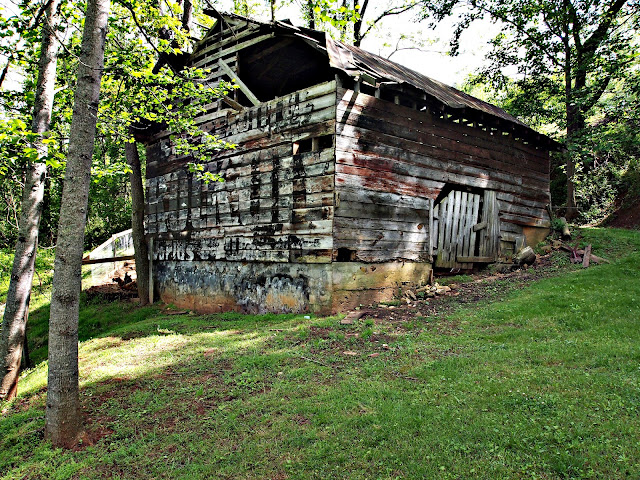Built in 1904 in an architectural style known as Richardsonian Romanesque, the
Wilkes County Courthouse is surely the funkiest in Georgia.
Washington, a small city in northeast Georgia, had a population of only 3,754 people in the 2020 census. Yet the town has an unusually distinguished history. It also has what is probably the funkiest courthouse in the state.
Washington was first settled in 1774 with the name Heard's Fort, and was for a brief time during the Revolutionary War the capital of Georgia. Of greater note, however, is the fact that the final cabinet meeting of Jefferson Davis' Confederate government took place here, and it was here in Washington on May 5, 1865 that the Confederacy was officially dissolved.
Built in 1814, the Robert Toombs House is an Historical Site .
Although Madison is better known for its antebellum homes, Washington and Wilkes County actually have the most such houses in Georgia -- more than a hundred.
The 1793 Liberty
Inn is believed to be the oldest original
house in Washington.
The Fitzpatrick Hotel is located on the courthouse square.
Although the Fitzpatrick Hotel was built in 1898, it fell on hard times and was closed for more than 50 years. It has now been fully restored and features 17 luxurious rooms furnished in Victorian period furniture.
Stop by the Visitors' Center at 22B West Square near the courthouse and pick up a map to guide you on a fascinating walking or driving tour. You could easily spend a lot of time in Washington. And while you're here, experience something unique: visit the old-fashioned soda fountain and lunch counter at the Fievet Pharmacy at 115 East Robert Toombs Avenue. They're open 8 a.m.–4:40 p.m. Monday through Friday and 8 a.m.–2 p.m. on Saturday, serving breakfast, burgers, sandwiches, salads, milkshakes, and sodas.
(Adapted from my book Backroads and Byways of Georgia.)
Photos: The courthouse, Robert Toombs House, and the Fitzpatrick Hotel were all photographed with a Canon EOS 6D camera and the Canon EF 28-105mm lens. For the Liberty Inn photo I used an Olympus E-M5 with the Panasonic Lumix 14-140mm G-Vario lens.
Signed copies of my book Backroads and Byways of Georgia
are available. The price is $22.95 plus $4.50 shipping. My PayPal
address is djphoto@vol.com (which is also my email). Or you can mail me a check to 8943
Wesley Place, Knoxville, TN 37922. Include your address and tell me how
you would like your book inscribed.
Check out the pictures at my online gallery: https://davejenkins.pixels.com/ Looking is free, and you might find something you like.
Photography and text copyright 2024 David B.Jenkins.
I post Monday, Wednesday, and Friday unless life gets in the way.

























